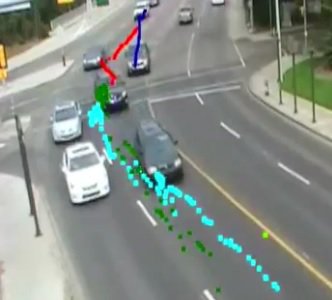
EDMONTON – It’s a sad truism in traffic planning that most safety improvements only come after a pedestrian gets hit.
New video technology to be rolled out across Edmonton this summer promises to change that approach.
Safety officials first ran a trial this year at the top of Scona Road. In two days, the video cameras captured enough near misses to prove residents were right about speeding and problematic sight-lines at a dangerous crosswalk. Past techniques required three years of collision data.
As soon as they saw the video, city officials approved new signage and advanced flashing lights for the pedestrian crossing this summer.
Council also promised to keep the speed limit at 50 km/h, a contentious move on a recently widened road that’s already a sore spot for those caught by photo radar.
The road feels wide enough to go 60 km/h — 15 per cent of vehicles were already going more than 70 — but when vehicles speed up the hill, they contribute to a dangerous intersection at the top.
That is exactly what neighbours said would happen when the city proposed widening the road, said Coun. Ben Henderson, who is excited about the new video technology.
“People know a lot about their communities. Us thinking we know better than they do is producing these kind of mistakes,” he said.“There have been other places where people say this isn’t safe, and sure enough something happens.”
University of British Columbia researcher Tarek Sayed has been developing this new approach since 2009. It is used in nearly a dozen countries. His team sets up video cameras capturing every angle of a road or intersection.
A computer scans the data, analyzes the trajectory of each person walking, driving or cycling, and picks out conflicts where road users were within three seconds of a collision before one of them changed course.
Sayed reviews those near misses to get an accurate assessment of why the problems are happening. His computer analysis is detailed enough to differentiate the gender of a pedestrian with 80 per cent accuracy and distinguish the gait of a senior from that of younger pedestrians.
Source: leaderpost.com
